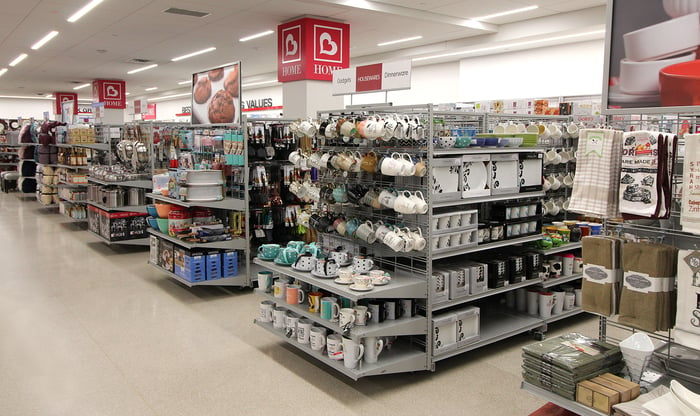U.S. retail spending has surged this year, with brick-and-mortar chains driving the bulk of the industry's growth. Off-price retailers have been some of the biggest winners.
On Thursday, Burlington Stores (BURL -0.34%) joined its two larger rivals -- TJX Companies and Ross Stores (ROST -0.75%) -- by reporting stellar second-quarter sales and a big earnings beat. Nevertheless, Burlington stock plunged 9% following the earnings release. While the retailer does face near-term margin headwinds, this pullback could be a good buying opportunity for long-term investors.

Data by YCharts.
Another excellent quarter
Like many brick-and-mortar retailers, Burlington Stores suffered during 2020. The COVID-19 pandemic forced it to temporarily close its stores and dented traffic after they reopened. However, its business has come roaring back this year.
In the first quarter of fiscal 2021, comparable store sales surged 20% relative to fiscal 2019. Including the benefit of two years of store openings, total sales rose 35%. Adjusted earnings per share (EPS) more than doubled to $2.59, as the strong demand environment boosted gross margin and enabled Burlington to spread its operating expenses over more sales.
Burlington's momentum continued in the second quarter. Comp sales jumped 19%, driving a 34% increase in total sales compared to second-quarter 2019. Gross margin improved again, helping Burlington post a 55% increase in operating income and a 43% increase in adjusted EPS versus two years ago.
The company's revenue of $2.21 billion comfortably beat the analyst consensus of $2.05 billion. Similarly, its adjusted EPS of $1.94 crushed the average analyst estimate of $1.38. However, even with these strong results, Burlington stock failed to maintain its big year-to-date gains following the earnings release.
A cautious outlook spooked investors
During Burlington's recent earnings call, management said it expects double-digit comp sales growth to continue in the second half of fiscal 2021. Nevertheless, executives struck a cautious tone with respect to near-term profitability, due to soaring freight and supply chain costs. This matched the downbeat earnings forecast Ross Stores provided a week earlier.
Indeed, CFO John Crimmins estimated that if comp sales grow by 10% this quarter, Burlington's operating margin would decrease by about 2.5 percentage points relative to 2019. This forecast likely contributed to Burlington stock's big decline on Thursday.

Image source: Burlington Stores.
Of course, if Burlington can sustain its first-half revenue growth rate for the rest of fiscal 2021, it might be able to absorb the current cost pressure while holding margins flat. However, with the U.S. government starting to pull back on fiscal stimulus measures, management expects sales growth to moderate in the months ahead.
Big upside offsets high valuation
Even after Burlington stock's recent pullback, the shares trade for about 30 times forward earnings. That compares to 22 times forward earnings for Ross Stores. Indeed, Burlington shares have consistently carried a higher valuation than other major off-price retailers in recent years.
However, Burlington has more long-term upside than its larger, more established peers. First, it has massive expansion potential. The company sees room to eventually operate 2,000 stores in the U.S., up from just 792 at the end of last quarter. That would represent a 153% increase. By contrast, Ross Stores' long-term target of 3,000 locations implies room to increase its store count by only 58% over time.
Second, Burlington has meaningful margin expansion potential. In fiscal 2019, it recorded a 9.3% adjusted operating margin, compared to Ross Stores' 13.4% operating margin during the same period. Management has developed a clear plan to close that gap by shifting the store base toward smaller stores with higher sales per square foot and faster inventory turnover.
Burlington stock remains quite pricey, to be sure. But between its existing track record of success, its expansion potential, and management's plans to boost its operating margin, it holds plenty of promise for patient investors. That makes the recent pullback look like an enticing buying opportunity.





